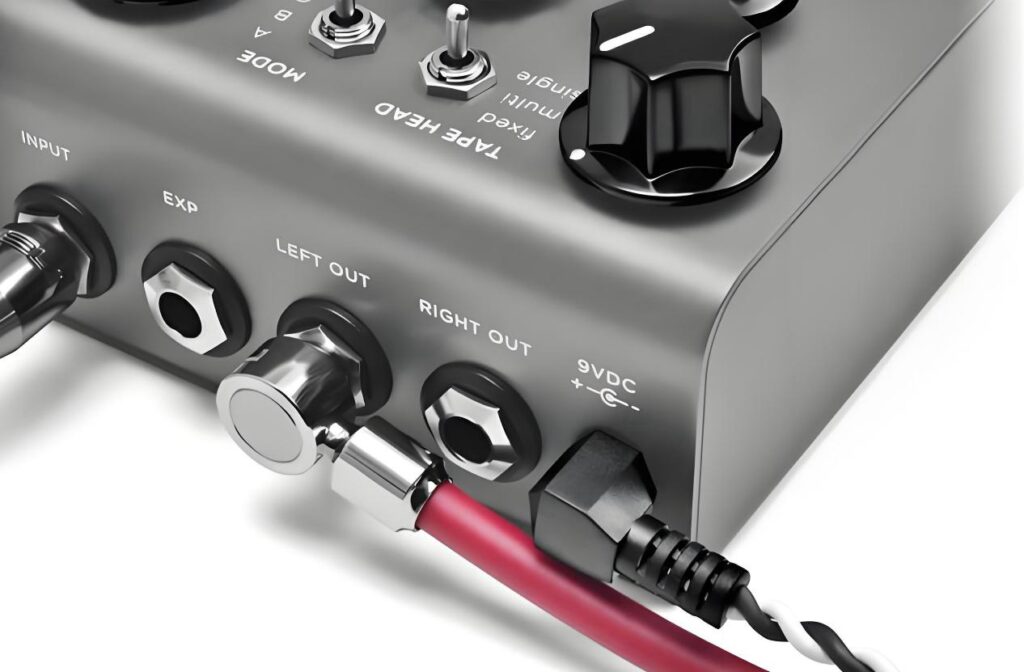
Most guitarists, when considering effects pedals, tend to focus on tone shaping, circuit design, or switching systems, neglecting the DC power interface. However, choosing the right type, rated power, and mechanical structure determines the reliability and stability of the effects pedal, preventing problems such as noise, power outages, or even complete damage.
If you build or repair effects pedals or simply want to understand the internal components of equipment, then mastering the basics of DC power interfaces is essential. This article will introduce the key considerations for choosing a DC power interface (especially for guitar effects pedals) and help you understand the various options within the categories of DC power interfaces and audio interfaces.
The Role of the DC Power Jack
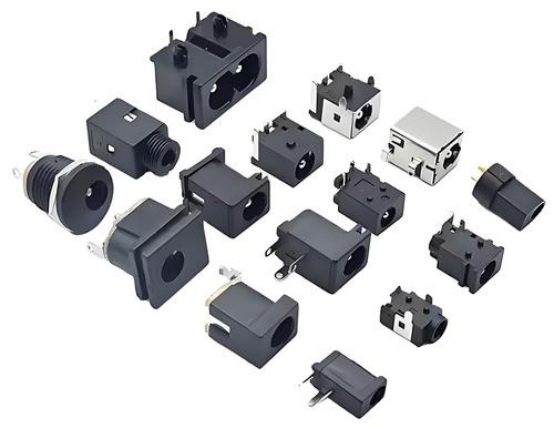
On a guitar pedal, the DC connector acts as the gateway between external power and the internal circuitry. Most pedals run on 9 volts DC, though some operate at 12V, 18V, or even 24V depending on the design. A stable, noise-free connection is crucial, because any interruption affects the pedal’s output.
A good DC jack must provide:
- A firm mechanical connection between the power plug and the pedal.
- Reliable electrical contact that stays stable even when the pedal is moved, stepped on, or repositioned.
- Durability that holds up to repeated plugging and unplugging during rehearsals, gigs, and travel.
Poor power connectors are one of the leading causes of pedal failure. Worn contacts, loose plugs, or undersized jacks can cause noise, crackling, or total signal loss.
A well-chosen power jack prevents all of these issues by ensuring clean power delivery in even the toughest playing conditions.
The Most Common Connector Size for Pedals
While many types of DC connectors exist across the electronics world, guitar pedals overwhelmingly use a single standard size: 5.5 mm outer diameter with a 2.1 mm inner pin. This is often referred to as the “2.1 mm barrel connector” or “Boss-standard” plug.
The popularity of this size is due to its stability, compact form factor, and compatibility with the vast majority of commercial power supplies.
However, not every pedal uses the same depth, polarity, or jack configuration. Even if the barrel size matches, internal design choices can change which jack is right for your project.
Panel-Mount vs PCB-Mount Connectors
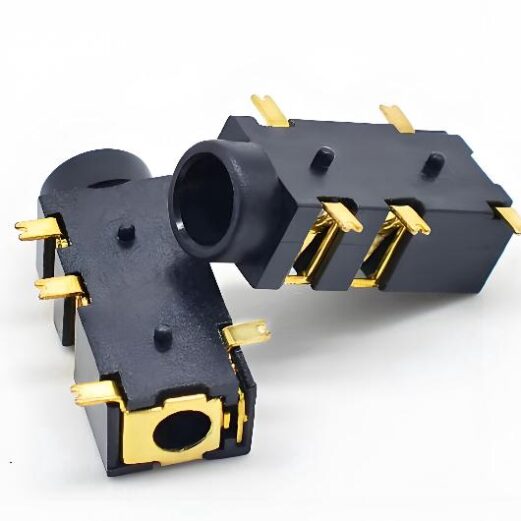

One of the biggest distinctions in DC power jacks is how they attach to the pedal enclosure and the internal circuitry. The two most common configurations are panel-mount and PCB-mount.
Panel-Mount Jacks
These jacks attach directly to the metal or plastic enclosure using a nut or threaded body. They’re commonly chosen for:
- Handmade or boutique pedals
- Pedals with off-board wiring
- Designs that require extra mechanical stability
Because the jack is physically fixed to the enclosure, it absorbs mechanical stress when a plug is inserted or removed. This means solder joints and circuit boards remain protected from strain.
Panel-mount jacks are also highly versatile, working with a range of enclosure shapes and wiring layouts.
PCB-Mount Jacks
PCB-mount units solder directly to the pedal’s circuit board. This creates a compact, streamlined assembly and reduces the number of wires inside the enclosure.
Manufacturers often choose this style for:
- High-volume production
- Compact pedals
- Consistent alignment of components
The main consideration is ensuring the jack aligns perfectly with the enclosure hole. When implemented correctly, PCB-mounted jacks are extremely reliable. But if the pedal undergoes heavy physical use, they may require reinforced solder joints or internal bracing.
Switching vs Non-Switching DC Jacks

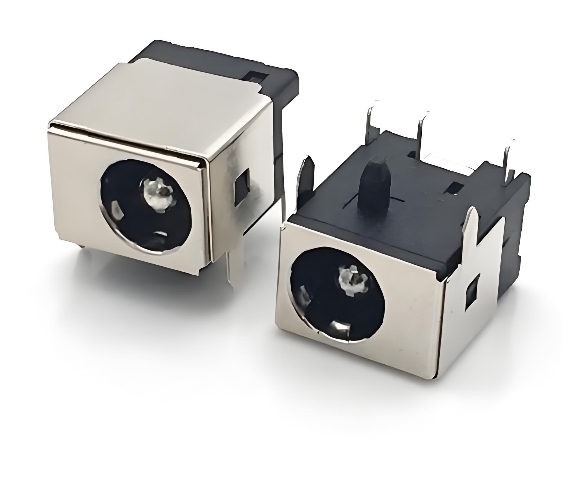
Many DC connectors include built-in switching mechanisms. These switches control how power flows when a plug is inserted or removed.
A switching jack typically disconnects battery power when an external adapter is connected. This prevents draining the pedal’s battery unnecessarily.
Non-switching jacks are simpler. They provide a direct, continuous connection without rerouting internal circuits.
In pedal design, switching jacks are especially useful when:
- A pedal supports both battery and external power
- You want automatic power routing
- You’re designing for maximum convenience during live use
A non-switching jack may be more appropriate for pedals that only accept external power or where internal routing is handled elsewhere in the circuit.
Electrical Considerations: Voltage, Current, and Polarity
Although 9V is the most common pedal voltage, the DC jack must be able to safely handle the maximum voltage and current the pedal requires. Engineering guides stress that a jack’s voltage rating determines the insulation needed to prevent arcing or breakdown, while the current rating indicates the physical robustness of the contacts.
For guitar pedals, current requirements are usually modest, but digital pedals or multi-effects units may need higher current. Choosing an underrated jack risks overheating, voltage drop, or premature wear.
Polarity is another essential factor. Most pedals use center-negative configuration, meaning the inner pin carries the negative voltage and the barrel carries the positive. This is opposite from many consumer electronics, so correct marking is important.
Selecting a well-designed connector ensures safe operation and long-term stability, regardless of the pedal’s power draw.
Mechanical Strength and Build Materials
Because guitar effects pedals are frequently stomped on, kicked, and plugged in and out in low light, the physical durability of DC or audio connectors is just as important as their electrical performance. Connectors must withstand not only repeated use but also the mechanical stresses of live performances, rehearsals, travel, and frequent installation and removal.
The long-term reliability of a connector depends on several factors. The quality of the contact plating affects conductivity and long-term corrosion resistance. Internal spring pressure also plays a crucial role, ensuring the plug maintains a firm electrical contact even if the effects pedal is impacted or repositioned.
The housing material is equally important: thicker metal housings generally provide superior structural strength and resistance to physical deformation, while high-grade plastics offer better insulation and help reduce overall weight without compromising functionality.
Smooth insertion and stable removal are also hallmarks of good mechanical design. If a connector feels too difficult or loose from the start, it may wear out prematurely or fail under the stress of frequent use.
A robust and durable connector is essential in harsh operating environments. Choosing a robust and well-made interface ensures the continuous and reliable operation of the effects unit and avoids unnecessary malfunctions in the future.
Audio Jacks in Pedal Design
Alongside DC power inputs, many pedals include audio jacks for input, output, stereo routing, or expression control. These jacks share many of the same considerations as power connectors but must also maintain a clean audio path.
Important factors include:
- Contact resistance
- Shielding and noise rejection
- Mechanical wear caused by frequent plugging
- Size and mounting method
A reliable audio jack contributes heavily to noise-free operation. Slight corrosion or weak contact pressure can introduce crackling or intermittent dropouts—problems that often get mistaken for pedal failure. High-quality connectors ensure consistency and clarity across every part of the signal chain.
Choosing the Right Connector for Your Pedalboard Build
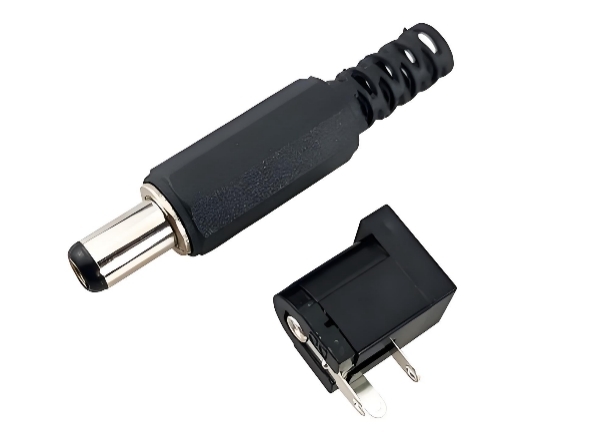
When designing a pedal, whether it’s your first or part of a new product line, selecting the right DC and audio jacks is crucial. Key considerations include whether the pedal will support both battery and adapter power, the priority of compactness versus durability, and if the pedal will endure heavy mechanical stress. Additionally, think about whether the design requires panel-mount or PCB-mount installation, the voltage and current the jack must handle, and if you’re using the standard 2.1 mm barrel connector.
Other factors to consider are the importance of shielding and low-noise performance, as these directly affect the pedal’s overall user experience. By carefully evaluating these questions, you ensure that the connector not only meets functional requirements but also contributes to the pedal’s reliability and quality.
Using Product Categories Effectively
Browsing the DC and audio jack category helps you compare different mounting styles, sizes, contact configurations, and materials. The variety allows builders and repair techs to select connectors tailored to specific projects without compromising reliability.
Whether you’re replacing a worn DC socket on an old pedal or planning a full new build, having access to multiple options makes it easier to match the connector to your design needs.
Conclusion
In guitar effects pedals, every component is essential, but the DC power connector and audio connector are particularly critical. They determine whether the effects pedal starts reliably, whether the signal transmission is clean, and whether the device can withstand years of use. By understanding factors such as connector type, electrical ratings, mounting methods, and mechanical structure, you can build stable effects pedals that rival professional performance.




